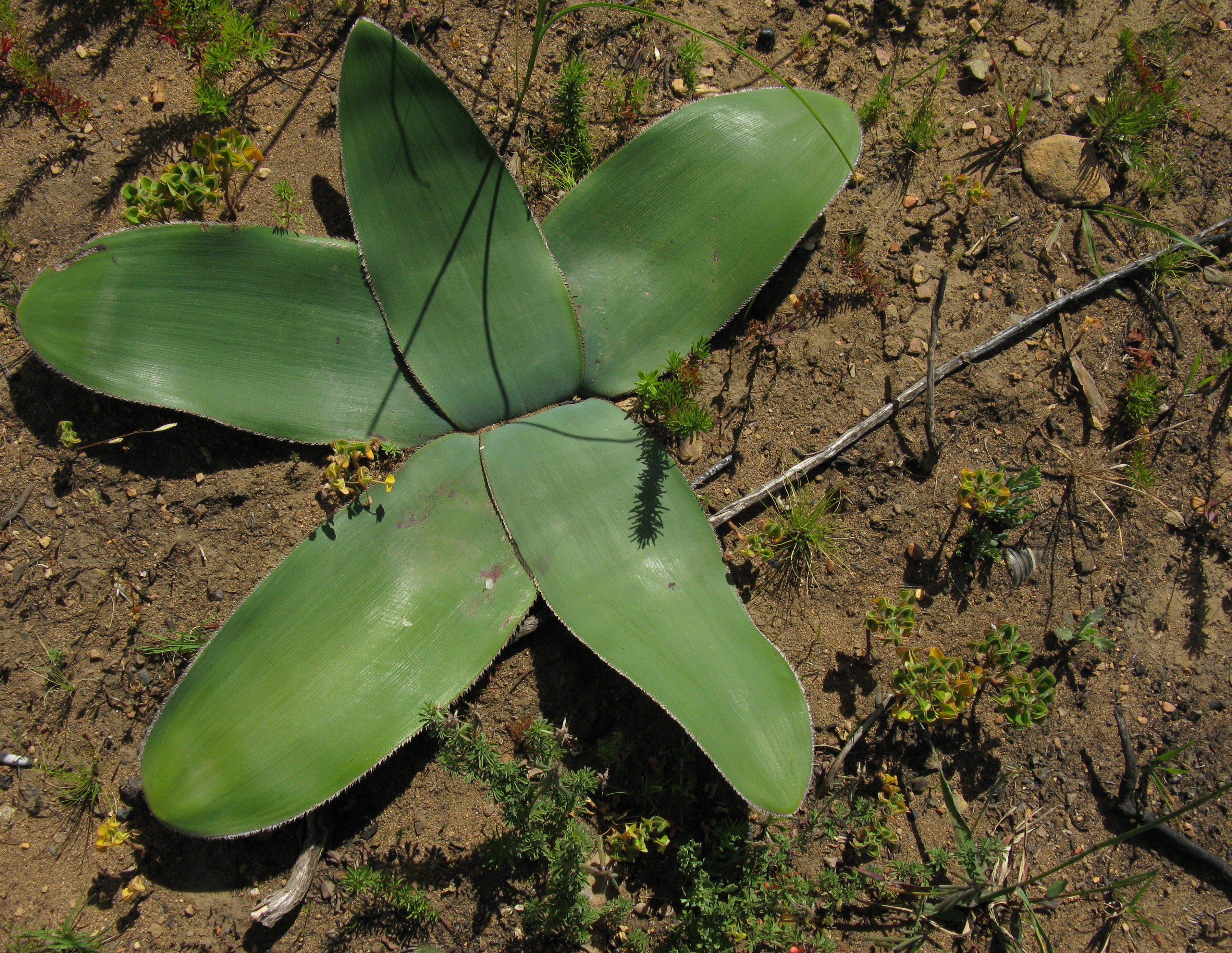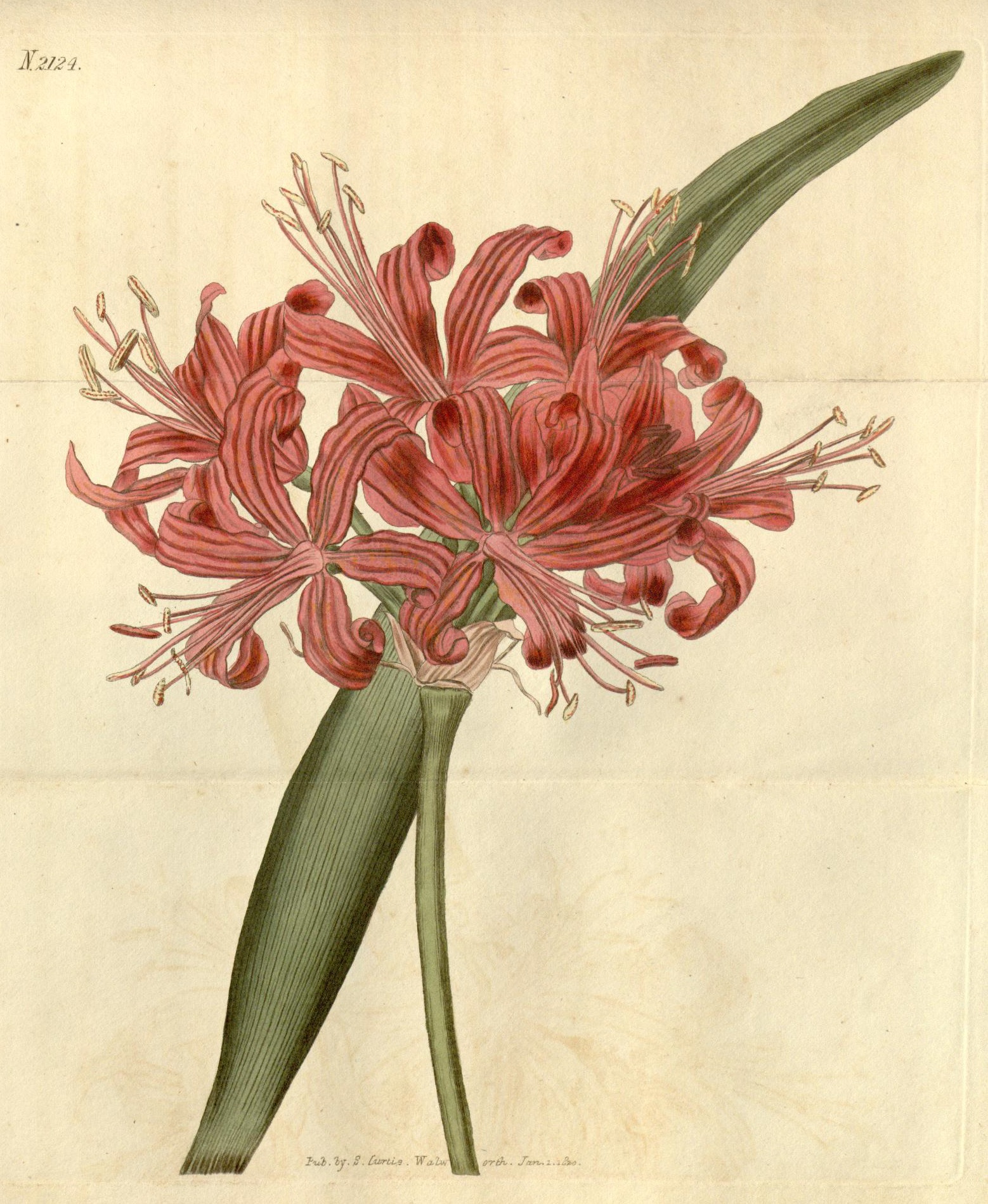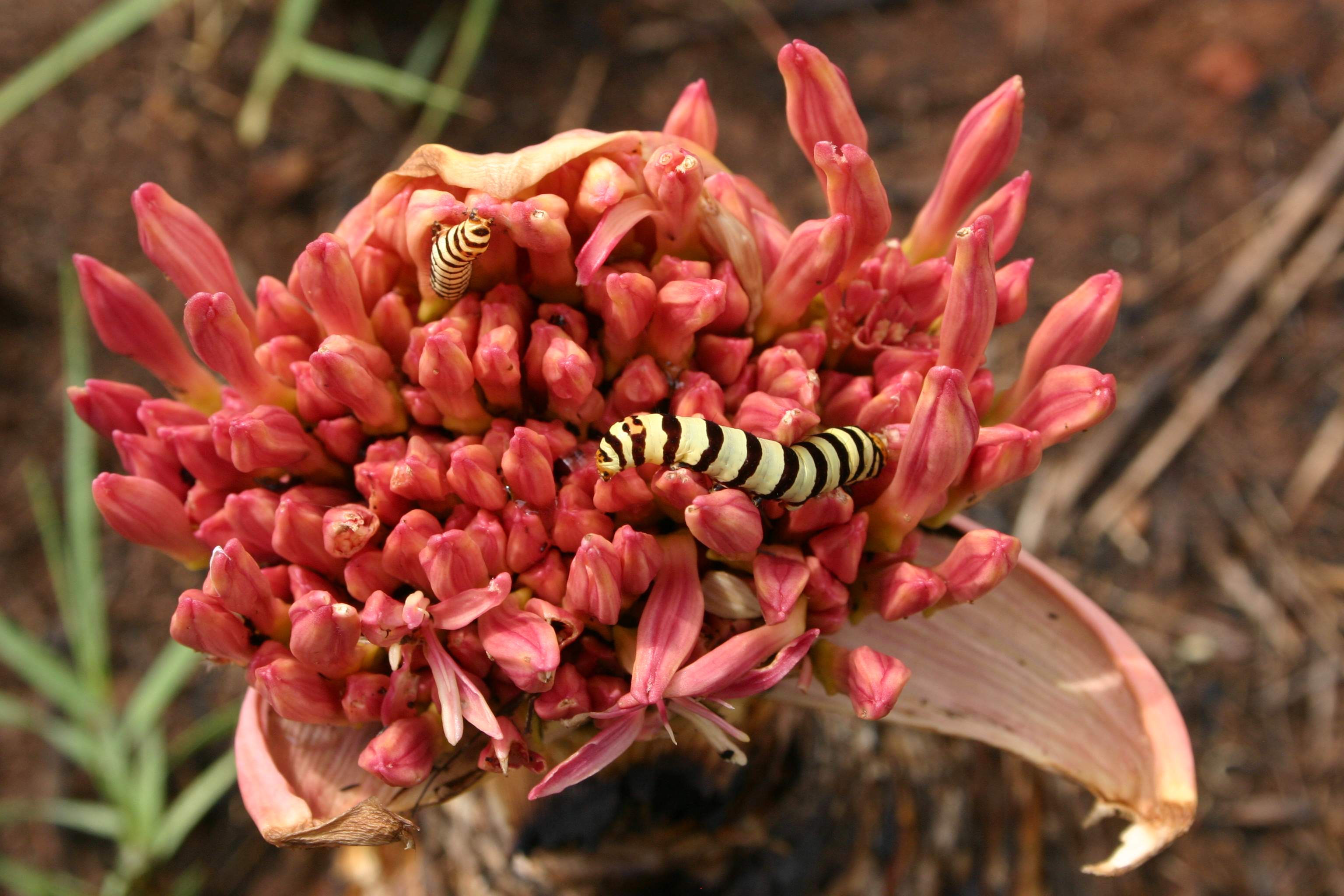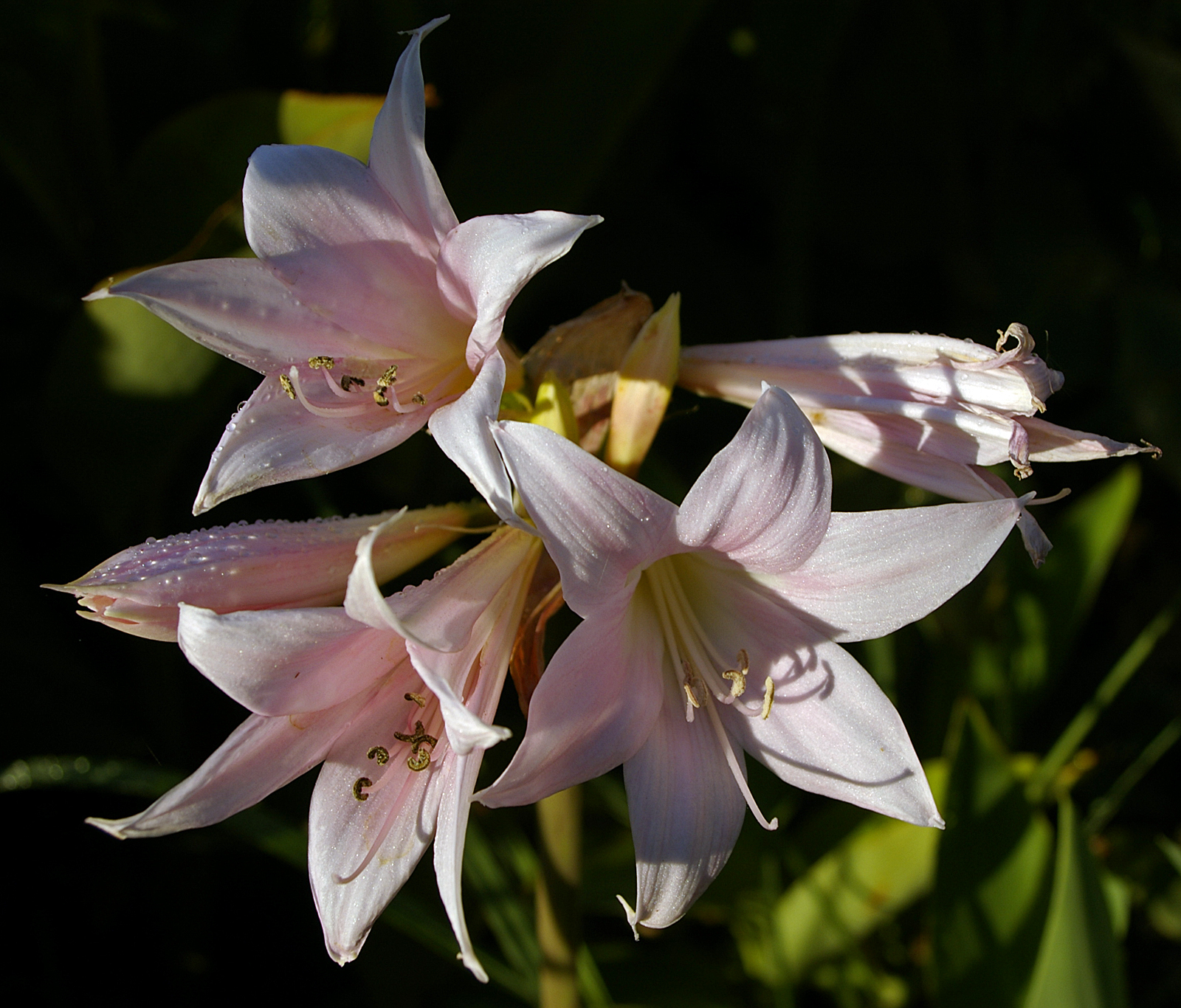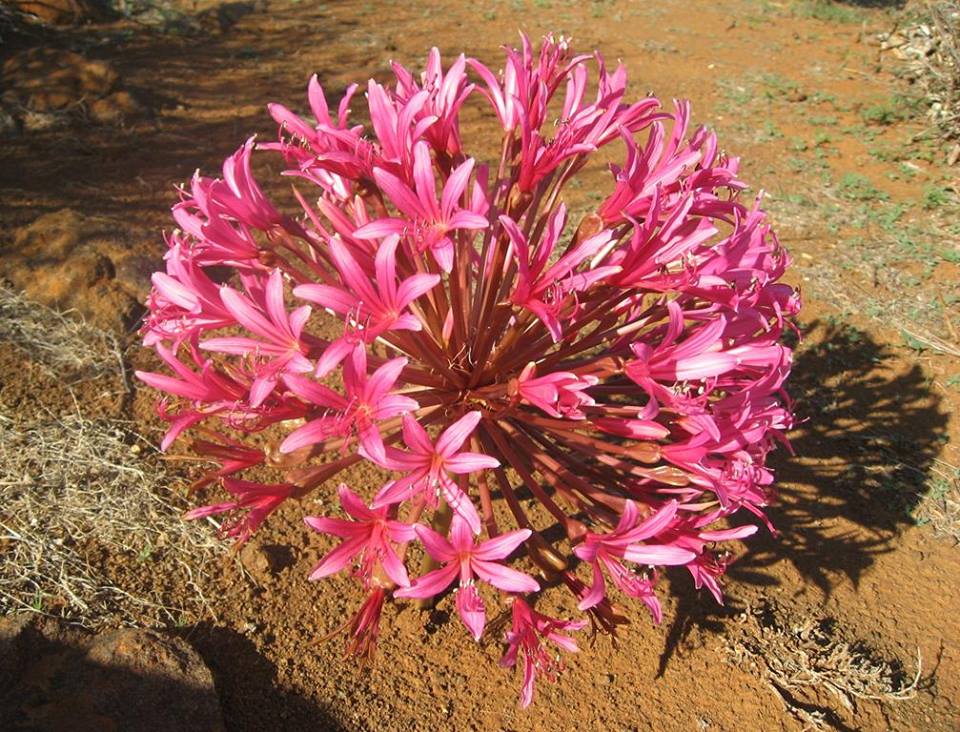|
Strumariinae
Strumariinae is one of four subtribes within the tribe Amaryllideae (subfamily Amaryllidoideae, family Amaryllidaceae), found in southern Africa. Description The leaves are often prostrate (on the ground). The flowers may be zygomorphic or actinomorphic, and may or may not have a perigone tube. The stamens are connate (fused) into a tube at their proximal end. However ''Strumaria'' has one whorl of the stamens fused to the style. The fruit is dehiscent with seeds that have a well-developed integument In biology, an integument is the tissue surrounding an organism's body or an organ within, such as skin, a husk, shell, germ or rind. Etymology The term is derived from ''integumentum'', which is Latin for "a covering". In a transferred, or ... that is chlorophyllous with a stomatose testa. Taxonomy Phylogeny Strumariinae are placed within Amaryllideae as follow: These are phylogenetically related as follows: Subdivision Strumariinae consists of six genera, ... [...More Info...] [...Related Items...] OR: [Wikipedia] [Google] [Baidu] |
Nerine
''Nerine'' (nerines, Guernsey lily, Jersey lily, spider lily) is a genus of flowering plants belonging to the family (biology), family Amaryllidaceae, subfamily Amaryllidoideae. They are bulbous perennial plant, perennials, some evergreen, associated with rocky and arid habitats. They bear spherical umbels of lily-like flowers in shades from white through pink to crimson. In the case of deciduous species, the flowers may appear on naked stems before the leaves develop. native plant, Native to South Africa, there are about 20–30 species in the genus. Though described as lilies, they are not significantly related to the true lilies (Liliaceae), but more closely resemble their relatives, ''Amaryllis'' and ''Lycoris (plant), Lycoris''. The genus was established by the Revd. William Herbert (botanist), William Herbert in 1820. Nerines have been widely cultivated and much Hybrid (biology)#Hybrid plants, hybridized worldwide, especially ''Nerine bowdenii'', ''Nerine masoniorum, N. m ... [...More Info...] [...Related Items...] OR: [Wikipedia] [Google] [Baidu] |
Amaryllideae
Amaryllideae are a tribe of subfamily Amaryllidoideae (family Amaryllidaceae). They are herbaceous monocot perennial flowering plants with a predominantly Southern African distribution, with the exception of the pantropical genus ''Crinum''. They are generally treated as consisting of four subtribes. In addition to ''Crinum'', other genera include ''Amaryllis'', ''Boophone'' and ''Strumaria''. Taxonomy Phylogeny The placement of Amaryllideae within subfamily Amaryllidoideae is shown in the following cladogram: Subdivision There are four subtribes: * Amaryllidinae Pax * Boophoninae D.Müll.-Doblies & U.Müll.-Doblies * Crininae Baker * Strumariinae Traub ex D.Müll.-Doblies & U.Müll.-DobliesBot. Jahrb. 107: 18. 1985 emend Meerow & Snijman, 2001. These are phylogenetically related as follows: Amaryllidinae: Type. Monogeneric subtribe for genus ''Amaryllis''. Boophoninae: Monogeneric subtribe for genus ''Boophone''. Crininae: Three genera including ''Crin ... [...More Info...] [...Related Items...] OR: [Wikipedia] [Google] [Baidu] |
Crininae
Crininae is one of four subtribes within the tribe Amaryllideae ( subfamily Amaryllidoideae, family Amaryllidaceae), with a pantropical distribution (''Crinum'') and also sub-Saharan Africa. Description Leaves frequently show an intercalary meristem and are usually fringed with cartilaginous teeth. The leaf apices are also often truncate (cut off). The flowers may be actinomorphic to zygomorphic, with a perigone tube with free stamens. The fruit is indehiscent, irregular, and often rostellate (rosetted). The scape does not abscise (shed) during seed dispersal, with the exception of ''Ammocharis longifolia'' where it detaches at ground level. The seeds also lack an integument, but are endosperm-rich and partially chlorophyllous with cork-covering. Taxonomy Phylogeny Crininae are placed within Amaryllideae as follow: These are phylogenetically related as follows: Subdivision As circumscribed by Meerow ''et al.'' (2001), there were three genera (Species), althou ... [...More Info...] [...Related Items...] OR: [Wikipedia] [Google] [Baidu] |
Amaryllidoideae
Amaryllidoideae (Amaryllidaceae ''s.s.'', amaryllids) is a subfamily of monocot flowering plants in the family Amaryllidaceae, order Asparagales. The most recent APG classification, APG III, takes a broad view of the Amaryllidaceae, which then has three subfamilies, one of which is Amaryllidoideae (the old family Amaryllidaceae), and the others are Allioideae (the old family Alliaceae) and Agapanthoideae (the old family Agapanthaceae). The subfamily consists of about seventy genera, with over eight hundred species, and a worldwide distribution. Description The Amaryllidoideae are herbaceous, perennial flowering plants, usually with bulbs (some are rhizomatous). Their fleshy leaves are arranged in two vertical columns, and their flowers are large. Most of them are bulbous geophytes and many have a long history of cultivation as ornamental plants. They are distinguished from the other two Amaryllidaceae subfamilies (Agapanthoideae and Allioideae) by their unique alkaloidal ... [...More Info...] [...Related Items...] OR: [Wikipedia] [Google] [Baidu] |
Boophoninae
''Boophone'' is a small genus of herbaceous, perennial and bulbous plants in the Amaryllis family (Amaryllidaceae, subfamily Amaryllidoideae.) It consists of two confirmed species distributed across South Africa to Kenya and Uganda. It is closely related to ''Crossyne'', a genus whose species have prostrate leaves. They are drought tolerant but not cold-hardy, and are very poisonous to livestock. Taxonomy ''Boophone'' is the single genus in subtribe Boophoninae, in the Amaryllideae tribe. Phylogeny Boophoninae are placed within Amaryllideae as follows, based on their phylogenetic relationship: Species The list of ''Boophone'' species, with their complete scientific name, authority, and geographic distribution is given below.Royal Botanical Gardens, KewWorld Checklist of Monocotyledons: ''Boophone '' Accessed May 16, 2009. Etymology William Herbert wrote the name of this genus with three different orthographies: "Boophane" in 1821; "Buphane" and "Buphone" in 1825 ... [...More Info...] [...Related Items...] OR: [Wikipedia] [Google] [Baidu] |
Amaryllidinae
''Amaryllis'' () is the only genus in the subtribe Amaryllidinae (tribe Amaryllideae). It is a small genus of flowering bulbs, with two species. The better known of the two, ''Amaryllis belladonna'', is a native of the Western Cape region of South Africa, particularly the rocky southwest area between the Olifants River Valley and Knysna. For many years there was confusion among botanists over the generic names ''Amaryllis'' and ''Hippeastrum'', one result of which is that the common name "amaryllis" is mainly used for cultivars of the genus ''Hippeastrum'', widely sold in the winter months for their ability to bloom indoors. Plants of the genus ''Amaryllis'' are known as belladonna lily, Jersey lily, naked lady, amarillo, Easter lily in Southern Australia or, in South Africa, March lily due to its propensity to flower around March. This is one of numerous genera with the common name "lily" due to their flower shape and growth habit. However, they are only distantly related t ... [...More Info...] [...Related Items...] OR: [Wikipedia] [Google] [Baidu] |
Strumaria Gemmata
''Strumaria gemmata'' is a species of flowering plant in the family Amaryllidaceae, native to the Cape Provinces and the Free State of South Africa. It was first described by John Bellenden Ker Gawler in 1814. Description Members of the genus ''Strumaria'' have flowers in umbels, typically on long pedicels. ''Strumaria gemmata'' is the only species in the genus with yellowish flowers (the others have white or in a few cases pink flowers). The colour is mainly on the midrib of the tepals, which are channelled and have wavy (crisped) edges. File:Hessea_gemmata2.jpg, Close up of flower Distribution and habitat ''Strumaria gemmata'' is native to semi-arid areas of the Cape Provinces The Cape Provinces of South Africa is a biogeographical area used in the World Geographical Scheme for Recording Plant Distributions (WGSRPD). It is part of the WGSRPD region 27 Southern Africa. The area has the code "CPP". It includes the Sout ... and the Free State of South Africa. References ... [...More Info...] [...Related Items...] OR: [Wikipedia] [Google] [Baidu] |
Style (botany)
The stigma () is the receptive tip of a carpel, or of several fused carpels, in the gynoecium of a flower. Description The stigma, together with the style and ovary (typically called the stigma-style-ovary system) comprises the pistil, which is part of the gynoecium or female reproductive organ of a plant. The stigma itself forms the distal portion of the style, or stylodia, and is composed of , the cells of which are receptive to pollen. These may be restricted to the apex of the style or, especially in wind pollinated species, cover a wide surface. The stigma receives pollen and it is on the stigma that the pollen grain germinates. Often sticky, the stigma is adapted in various ways to catch and trap pollen with various hairs, flaps, or sculpturings. The pollen may be captured from the air (wind-borne pollen, anemophily), from visiting insects or other animals ( biotic pollination), or in rare cases from surrounding water (hydrophily). Stigma can vary from long and slen ... [...More Info...] [...Related Items...] OR: [Wikipedia] [Google] [Baidu] |
Namaquanula
''Namaquanula'' is a plant genus in the Amaryllidaceae, found only in Namibia and the Cape Province of South Africa. There are 2 recognized species: *'' Namaquanula bruce-bayeri'' D.Müll.-Doblies & U. Müll.-Doblies - Namibia, Northern Cape Province *'' Namaquanula bruynsii'' Snijman - Namibia Namibia (, ), officially the Republic of Namibia, is a country in Southern Africa. Its western border is the Atlantic Ocean. It shares land borders with Zambia and Angola to the north, Botswana to the east and South Africa to the south and ea ... References {{Taxonbar, from=Q9048521 Amaryllidaceae genera ... [...More Info...] [...Related Items...] OR: [Wikipedia] [Google] [Baidu] |
Brunsvigia
''Brunsvigia'' is a genus of African flowering plants in the family Amaryllidaceae, subfamily Amaryllidoideae. It contains about 20 species native to southeastern and southern Africa from Tanzania to the Cape Provinces of South Africa. Description ''Brunsvigia'' are perennial, deciduous, temperate, bulbous herbal plants. Most species have subterranean bulbs but they are usually half-exposed in ''B. herrei'' and ''B. josephinae''. Bulbs are tender, usually large (up to 20 cm diameter), winter-growing and summer- dormant, generally flowering in early autumn. Tunics are often thick and cartilaginous, typically brittle and tan-coloured, although they are brown and papery in ''B. josephinae'' and ''B. litoralis''. The leaves are annual; when mature, the leaves are broad and oblong to tongue-shaped. In species with small bulbs – ''B. radula'', ''B. comptonii'', and ''B. namaquana'' – there are just two or three leaves per plant but most other species have at least four leaves ... [...More Info...] [...Related Items...] OR: [Wikipedia] [Google] [Baidu] |
Testa (botany)
A seed is an embryonic plant enclosed in a protective outer covering, along with a food reserve. The formation of the seed is a part of the process of reproduction in seed plants, the spermatophytes, including the gymnosperm and angiosperm plants. Seeds are the product of the ripened ovule, after the embryo sac is fertilized by sperm from pollen, forming a zygote. The embryo within a seed develops from the zygote, and grows within the mother plant to a certain size before growth is halted. The seed coat arises from the integuments of the ovule. Seeds have been an important development in the reproduction and success of vegetable gymnosperm and angiosperm plants, relative to more primitive plants such as ferns, mosses and liverworts, which do not have seeds and use water-dependent means to propagate themselves. Seed plants now dominate biological niches on land, from forests to grasslands both in hot and cold climates. The term "seed" also has a general meaning that anteda ... [...More Info...] [...Related Items...] OR: [Wikipedia] [Google] [Baidu] |
